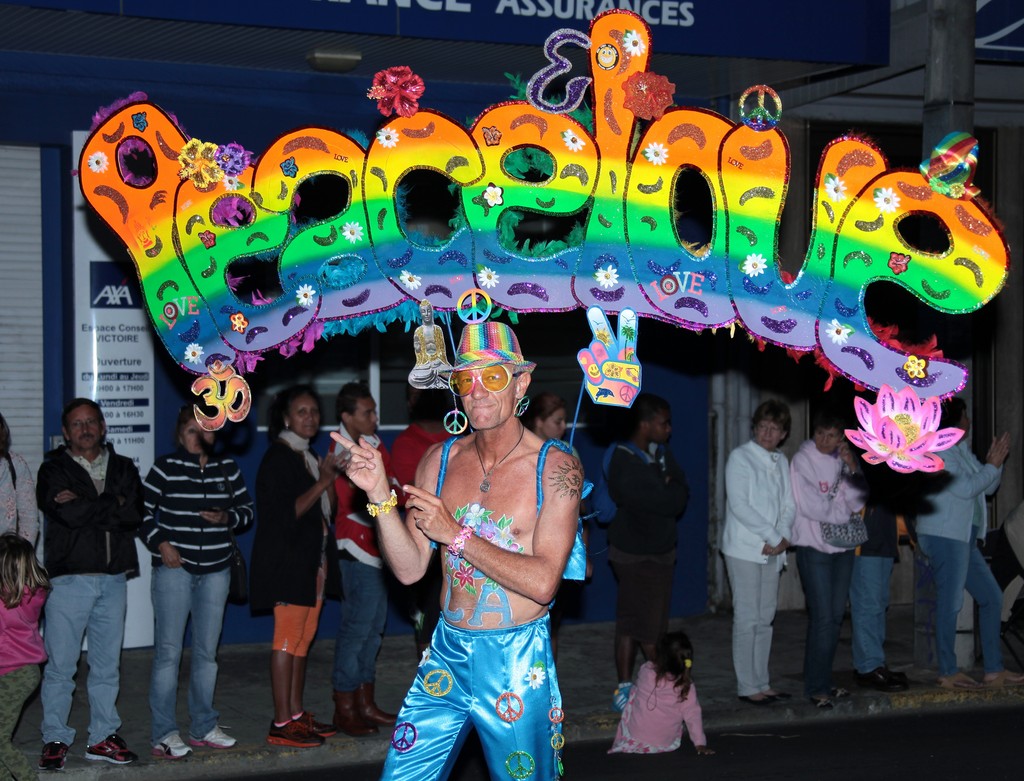PEACE AND LOVE
Peace and love est une expression de la langue anglaise signifiant "paix et amour", employée comme signe de reconnaissance dans les années 1960 par les hippies, et à laquelle est associé le symbole de la paix, ☮, qui fut employé sur de nombreuses bannières mais surtout sur pléthore de t-shirts portés par les hippies ou plus généralement par la "génération Woodstock" - t-shirts qui ont fait sensation de par leur facilité de personnalisation et leur simplicité d'usage - pour protester contre l'armement nucléaire, contre la guerre du Vietnam ou encore afin d'exprimer leur volonté d'un avenir sain sans pollution.
--------------------------------------------
The internationally known symbol for peace, ☮, was originally designed in 1958 for the British nuclear disarmament movement by Gerald Holtom. Holtom, an artist and designer, made it for a march from Trafalgar Square, London, to the Atomic Weapons Research Establishment at Aldermaston in Berkshire, organised by the Direct Action Committee to take place in April and supported by the Campaign for Nuclear Disarmament (CND). Holtom's design was adapted by Eric Austen (1922–1999) to ceramic lapel badges. The original design is in the Peace Museum in Bradford, England.
The symbol is a combination of the semaphore signals for the letters "N" and "D," standing for "nuclear disarmament". In semaphore the letter "N" is formed by a person holding two flags in an inverted "V," and the letter "D" is formed by holding one flag pointed straight up and the other pointed straight down. Superimposing these two signs forms the shape of the centre of the peace symbol.
--------------------------------------------
The internationally known symbol for peace, ☮, was originally designed in 1958 for the British nuclear disarmament movement by Gerald Holtom. Holtom, an artist and designer, made it for a march from Trafalgar Square, London, to the Atomic Weapons Research Establishment at Aldermaston in Berkshire, organised by the Direct Action Committee to take place in April and supported by the Campaign for Nuclear Disarmament (CND). Holtom's design was adapted by Eric Austen (1922–1999) to ceramic lapel badges. The original design is in the Peace Museum in Bradford, England.
The symbol is a combination of the semaphore signals for the letters "N" and "D," standing for "nuclear disarmament". In semaphore the letter "N" is formed by a person holding two flags in an inverted "V," and the letter "D" is formed by holding one flag pointed straight up and the other pointed straight down. Superimposing these two signs forms the shape of the centre of the peace symbol.
